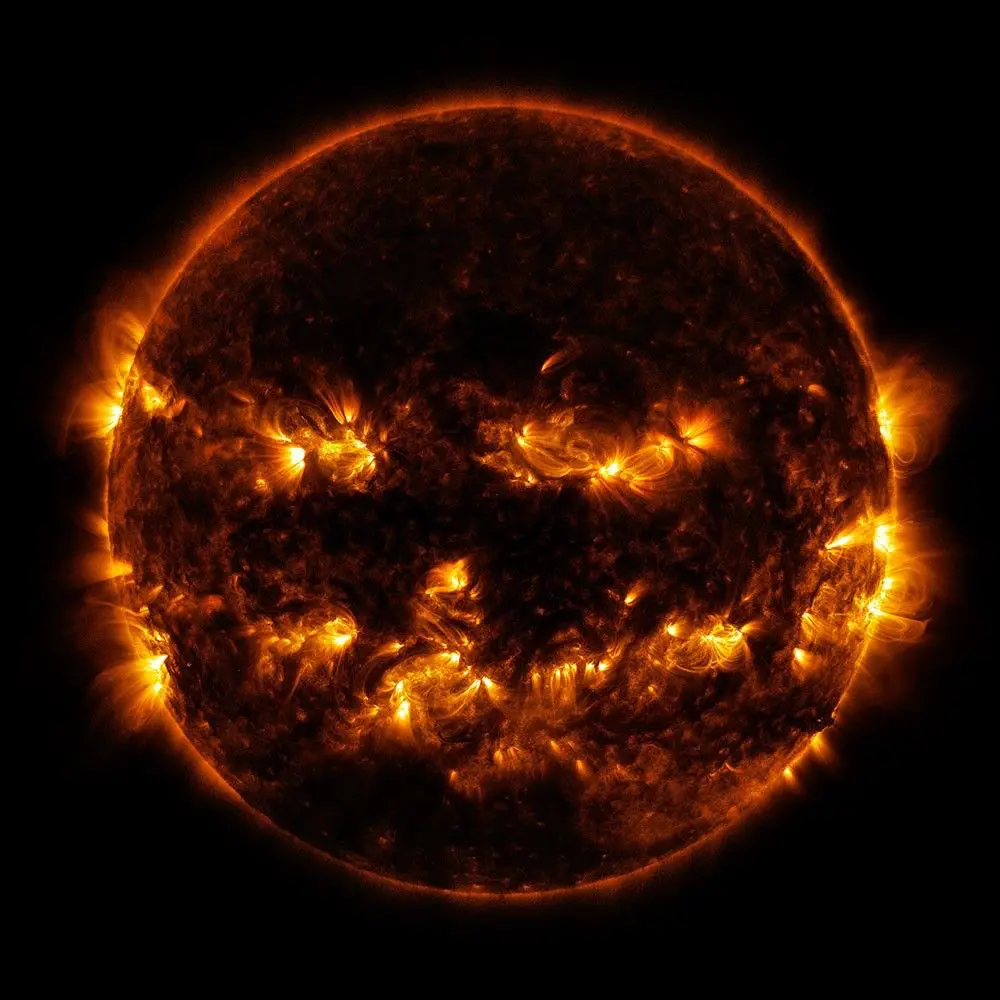NASA captures the Sun looking like a smiling face ahead of Halloween — here’s what really caused the eerie image
-
 Pumpkin Sun image captured by NASA (Image via science.nasa.gov)
Pumpkin Sun image captured by NASA (Image via science.nasa.gov)Just in time for Halloween, NASA has released a print of the Sun that appears to be smiling. The picture, taken by NASA’s Solar Dynamics Observatory (SDO), shows a face-like pattern on the Sun’s surface with what appears to be eyes, a nose, and a wide smile.
This photo very quickly went viral after NASA posted it online. Numerous people described the Sun as looking like a Halloween pumpkin or a smiling emoji. But behind the fun and spooky look, there’s an intriguing bit of wisdom.
How NASA captured the photo
The Solar Dynamics Observatory has been watching the Sun since 2010. Its primary role is to study solar activity and capture high-quality images of the Sun using various light sources.
In this case, the print was taken using ultraviolet light, which shows areas of strong glamorous exertion. The dark spots that look like the Sun’s eyes and smile are called coronal holes. These are areas where the Sun’s magnetic field opens up and lets solar wind flow out into space.
These dark spots appear that way because they release less ultraviolet light than the brighter corridor of the Sun. The patterns just happened to form in a way that looks like a face.
Not a real face, just a coincidence
Indeed, though it looks nearly too perfect to be real, scientists say the smiling pattern is just a natural coexistence. The Sun is constantly changing, and perhaps due to its intense magnetic activity, it frequently creates bright and dark regions that appear and disappear.
NASA scientists explained that the “face” isn't really permanent. It’s simply how the Sun looked at that moment. Over time, these coronal holes will move or vanish as the face of the Sun changes.
So, while it might look spooky or funny, the image is fully normal. These temporary patterns are one reason scientists find studying the Sun so intriguing.
Why coronal holes matter
Coronal holes are crucial for scientists studying space weather. These areas release streams of solar wind, which are charged particles that move through space and can reach Earth.
When the solar wind interacts with Earth’s magnetic field, it can cause geomagnetic storms. These storms sometimes create auroras — the green and pink lights seen near the North and South Poles.
By watching coronal holes, scientists can predict when solar winds might affect Earth. Strong solar activity can sometimes cause small disruptions to satellites, GPS signals or radio communications.
So, while the “smiling Sun” may look friendly, it’s also a reminder of how active and powerful our star really is.
A fun Halloween moment
The timing of the photo made it even more special. NASA shared it just before Halloween, and it quickly spread online. Many compared the Sun to a jack-o’-lantern, while others joked that it looked like the Sun was getting into the festive mood.
NASA indeed joined in the fun, entitling the post with a light-hearted note about the Sun “ smiling, ” while reminding everyone that the dark spots were actually coronal holes.
This isn’t the first time the Sun has appeared to smile. Similar face-like patterns have been observed before, illustrating the random and interesting nature of solar activity.
Beyond the Halloween fun, the image shows how NASA’s Solar Dynamics Observatory helps scientists understand the Sun’s behaviour — from solar flares to changes in energy that can affect Earth’s space weather.
TOPICS: NASA
- IAWN uses interstellar object 3I/ATLAS as a test case for future comet exploration
- Can lower-cost missions deliver big science? NASA's ESCAPADE aims to find out
- James Webb Space Telescope confirms first runaway supermassive black hole in distant galaxy
- Astronomers find supermassive black holes are rare in dwarf galaxies